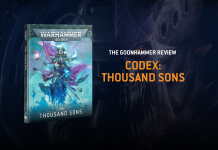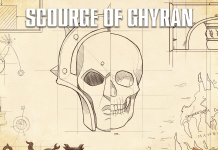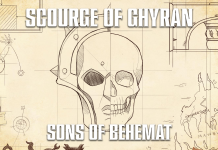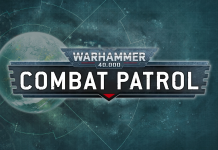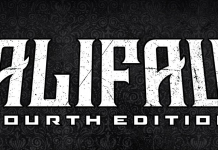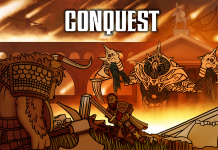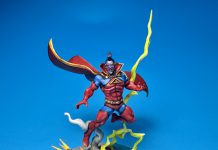This week’s Hammer of Math takes a look at some of the information that Warhammer Community has revealed about the upcoming changes in the 10th Edition of Warhammer 40,000.
Over a decade ago, I was at Adepticon when Mack Martin was doing demos of a new game written by him and Andy Chambers at Fantasy Flight Games called Dust Warfare. One of the things that stood out for me was that the game used special dice with symbols located on every face instead of numbers. While the commercial aspect was obvious, Martin explained that the intent behind the dice was to reduce the cognitive load on the player. His argument was that every dice roll imposes a mental burden. For a dice game with traditional numbered faces the player has to read the die (which in and of itself can be taxing), correlate the roll to a result, and then act on the result. Replacing the numbers with symbols eliminated the correlation step, which over the course of hundreds or thousands of die rolls will wear a player out. The idea that a designer should consider the mental load on a player is something that always stuck with me. Based on how GW is talking about 10th Edition, with a core design philosophy of “simplified, not simple,” it seems like they’re considering it as well.
9th Edition is not very kind to players in terms of mental load. In addition to the hundreds of dice rolls that drive a typical game, players have to lug around several books and consider an uncomfortable number of Stratagems, Relics, Warlord Traits, unit abilities, faction abilities, subfaction abilities, and a myriad of other concerns. The most effective abilities, notably re-rolls and extra attack mechanics, are also some of the most mentally taxing. A good example can be found in the waning days of 8th Edition, when a myriad combination of abilities led to a Space Wolf Smash Captain who could kill a Warhound Titan 99% of the time. This extreme example included full re-rolls for hits and wounds in addition to no less than two opportunities for bonus hits.
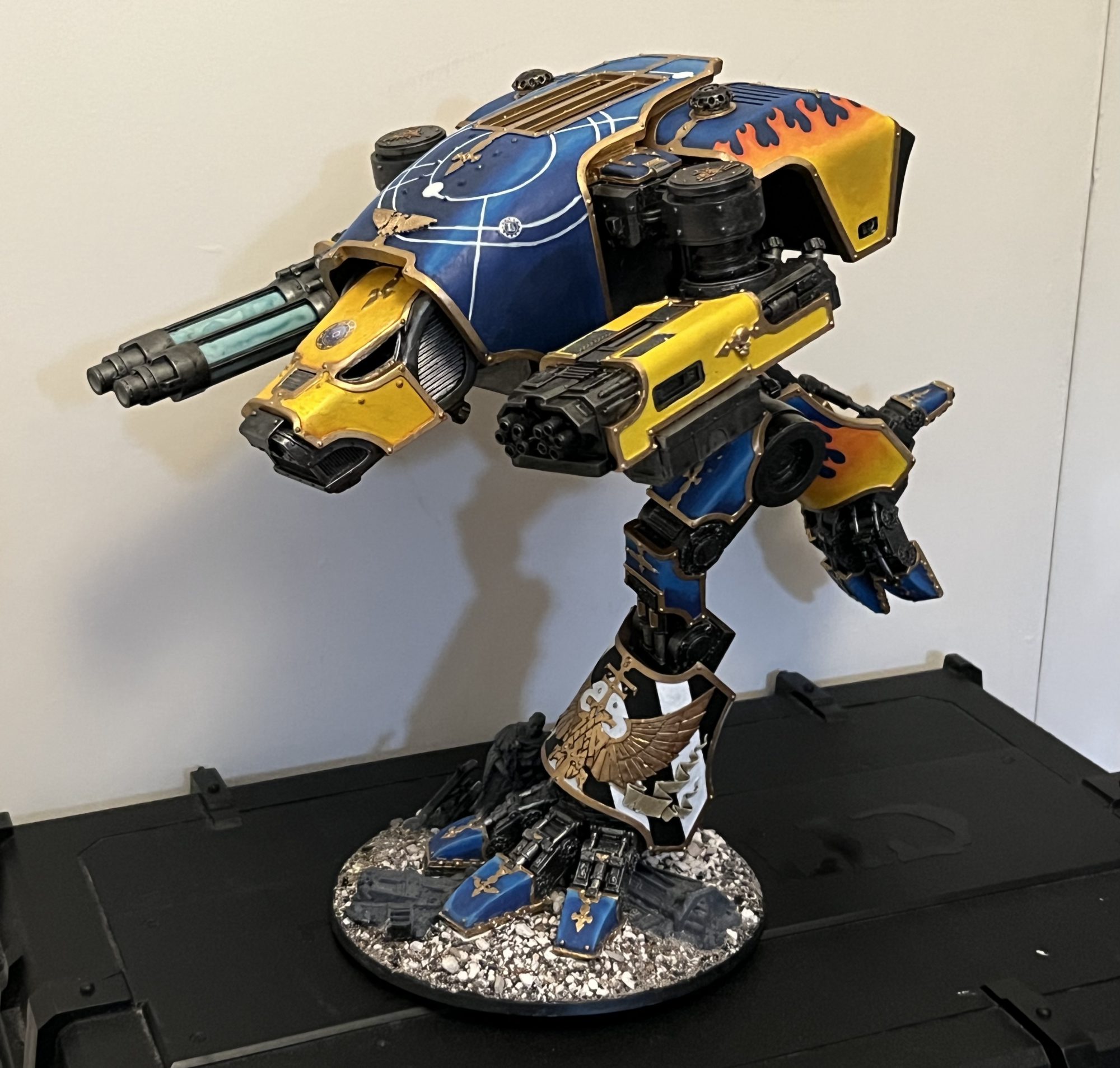
The new edition of 40k appears to take several steps to mitigate this. A good example can be found in the article regarding leaders, where instead of auras certain models now provide bonuses to a specific unit that they are permanently attached to. Instead of the old Tactical Precision, which allowed nearby units to re-roll wound rolls of 1, the model now has an ability which causes a Critical Hit (unmodified hit result of 6) to automatically wound the target. Assuming a 2+ to hit, the original version with re-rolls averages 1.97 rolls per hit-wound attack sequence, while the 10th Edition version averages 1.67. That’s a 15% reduction in rolls from a single ability change, not including the elimination of the aura effect. Another example can be found in the Devastating Wounds weapon effect described in the assault cannon profile. When the weapon achieves a Critical Wound (an unmodified wound roll of 6, although the Anti-X ability can change that target number), the weapon inflicts mortal wounds on the target equal to the Damage characteristic of the attack and the attack sequence ends. Note that re-rolls aren’t gone entirely, as Twin-linked allows wound rolls to be re-rolled, but it appears their use is more constrained.
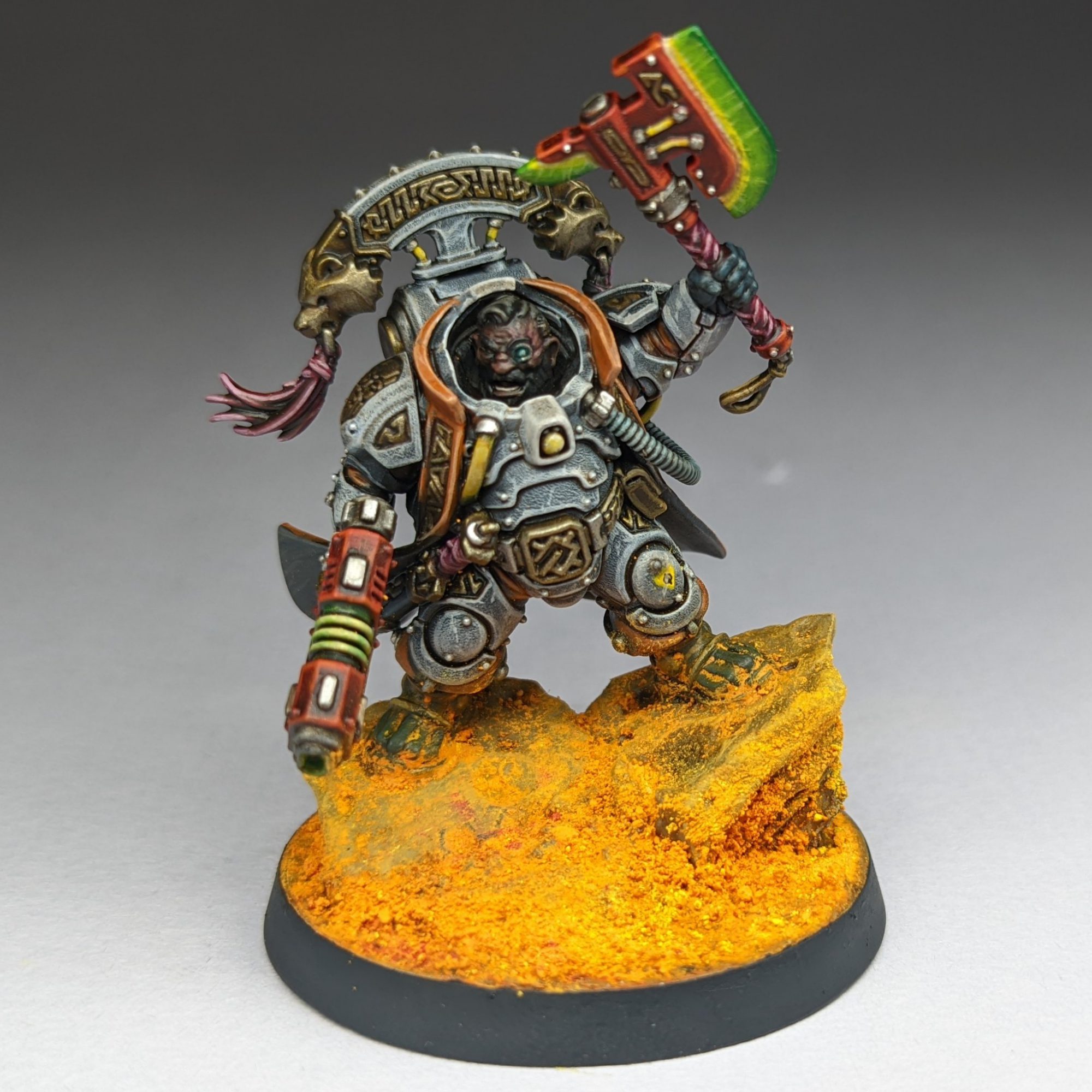
The use of effects that are linked to other rolls (as opposed to effects that are focused on a single roll, like modifiers and re-rolls) is that the magnitude of the effect is dependent on external factors. For example, the effect of re-rolling rolls of 1 (hit or wound) is a straight 17% improvement in the average output. One in six attack sequences will re-roll the wound roll, and the outcome is fixed. In contrast, when the wound roll is affected by the result of the hit roll the impact is dependent on both the hit and wound target numbers. A good example of this can be seen in the Eye of the Ancestors ability for Leagues of Votann. The delta is dependent on both the hit and wound rolls, making for a much more dynamic result.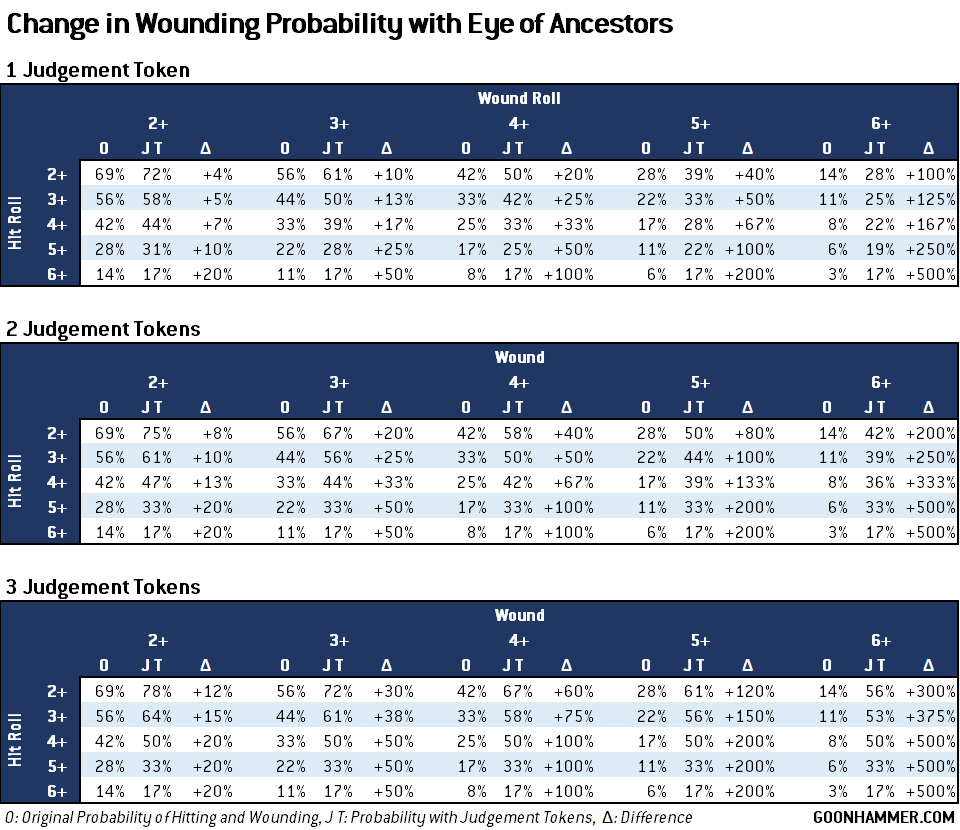 GW has asserted that the next edition of Warhammer 40k will be “simplified, not simple” and the changes we’ve seen so far mathematically reflect that. Dynamic effects which depend on multiple factors (as opposed to simple modifications to a single roll) make for a deeper game where the optimal solution is not always obvious and will likely change over time. It also makes my job more challenging, which should be almost as much fun as actually playing the game.
GW has asserted that the next edition of Warhammer 40k will be “simplified, not simple” and the changes we’ve seen so far mathematically reflect that. Dynamic effects which depend on multiple factors (as opposed to simple modifications to a single roll) make for a deeper game where the optimal solution is not always obvious and will likely change over time. It also makes my job more challenging, which should be almost as much fun as actually playing the game.
Thanks for reading! If you have any questions or comments feel free to drop us a note in the Comments below or email us at contact@goonhammer.com. That’s also the best way to suggest topics for future articles.

